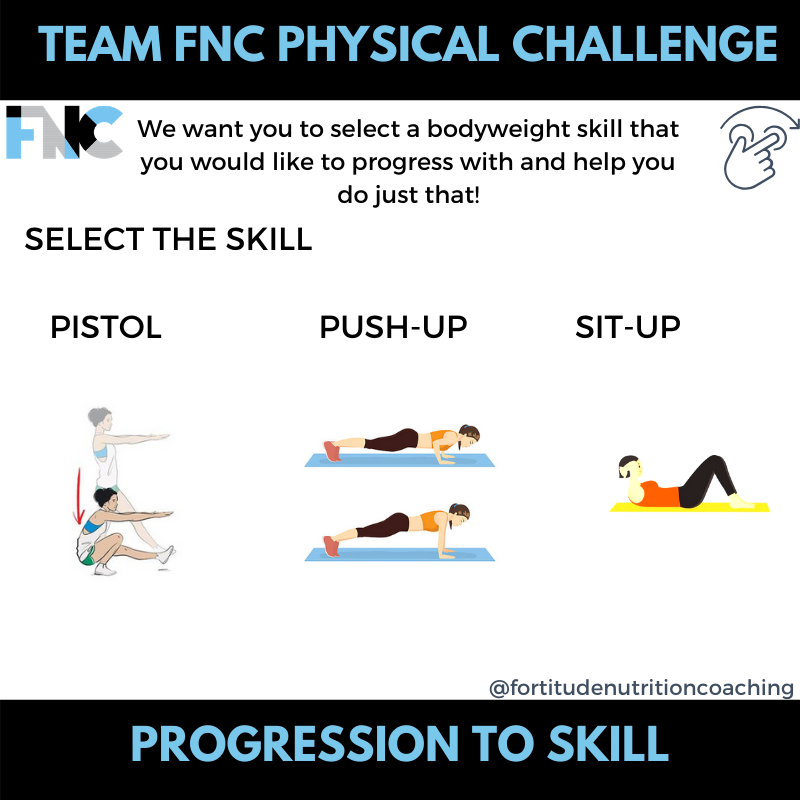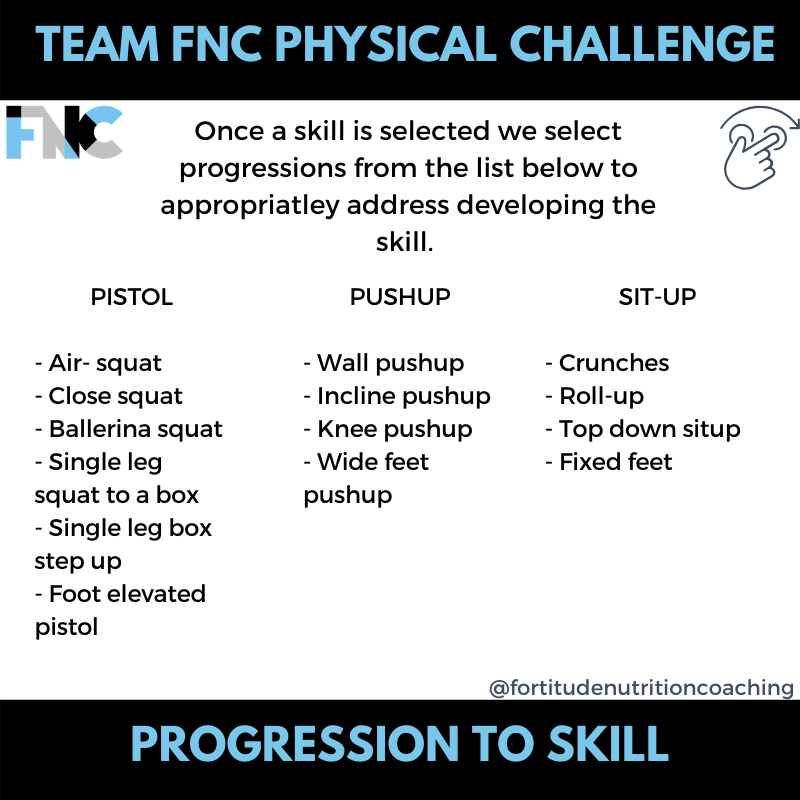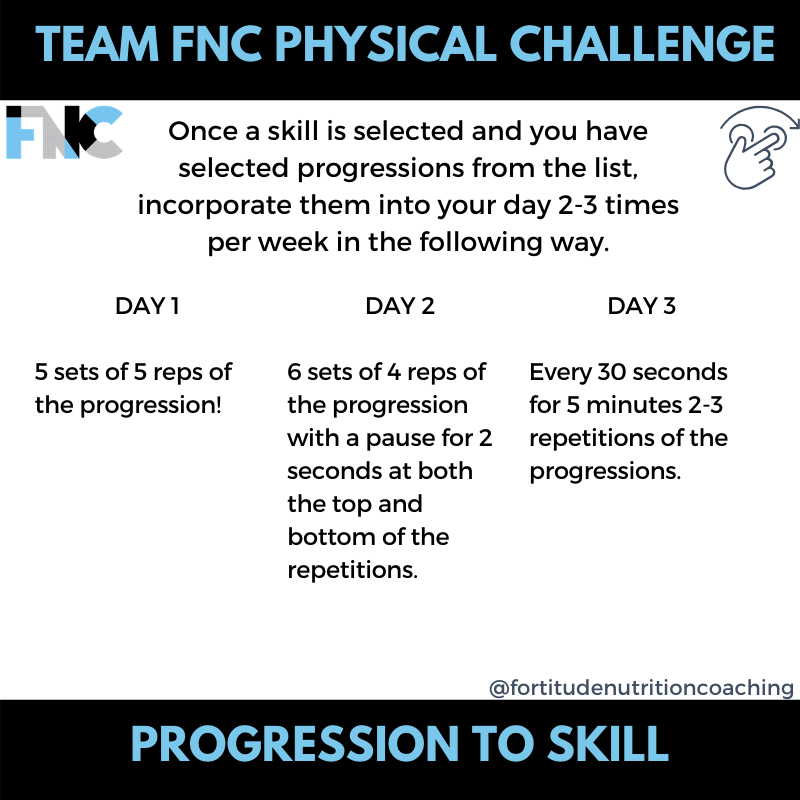We are all about progressing and making the most of our ability here at FNC, we thought why not give you a chance to progress with something that good nutrition gives us the ability to do regularly - exercise..
Using spare time as a chance to refine or work towards a skill that may elude you currently is a great way to add some progression into your daily/weekly routine.
How to use this
Step 1- SELECT THE SKILL
Step 2- SELECT THE APPROPRIATE SCALING
PISTOL:
Squat - with feet flat, about shoulder width apart, sit down as if you were going to sit in a chair. When you can’t squat any further, rise up to the starting point.
Close footed squat - with feet flat, bring your feet as close as you can together to perform an air-squat with a close stance.
Single leg box squat - Stand on one foot with a stable box positioned just behind you, your free foot should be bent and raised a few inches off the floor. Hold your hands out in front of you, using them for balance as necessary. This will be your starting position. Keeping your hips as square as possible, descend into a deep knee bend and momentarily sit on the box.
Stand back up by extending at the hip and knee and repeat for reps before switching to the opposite side.
Ballerina squat - with one foot flat and the other on the point of the toe (to be used for balance) start with feet in a shoulder width stance and progress down into an assisted pistol, then stand to full extension.
Elevated single leg squat - using a small book, or an elevated ledge place one heel on the elevated surface. Using your arms for balance sit down into a full squat on one leg with the heel raised as an assistance method for maintaining a neutral spine and balance.
SIT-UP:
Crunch - Hands behind your head, gently lift your head and shoulders, hold briefly and relax back down.
Roll up - with feet slide your hands up to your knees, then lower back down.
Top down - start at the top of the sit up and slowly lower yourself down to the floor.
Fixed foot - keeping the feet flat to the floor, anchor them under a bench or around a pole, hands behind your head lift the shoulders from the floor up to the knees and back down.
PUSH-UP
Wall - Face a wall, standing a little farther than arm’s length away, feet shoulder-width apart. Lean your body forward and put your palms flat against the wall at shoulder height and shoulder-width apart, bending the elbows and moving your chest towards the wall, then locking the arms back out to finish the rep.
Incline - Bend your elbows to slowly lower your chest to the edge of a table/bench/desk. Keep a straight body throughout the movement. Push your body away from the bench until your elbows are extended.
Knee - Begin in a hands and knees position. Place your hands on the ground on either side of your shoulders. Your knees should be at a comfortable distance apart. Slowly lower your elbows to bring your chest toward the ground. Touch the chest to the ground in the lowered position. Push up from the ground to your starting position.
Elevated floor push-up- using a pillow or something of a similar size under the chest, perform a pushup to the pillow as the target, this decreases the deficit in which we need to descend for the pushup to be completed.
Wide feet - start in a plank position with feet at shoulder width or wider distance, descend chest down towards the floor and then lock the arms back out to complete the rep.
Step 3- INCORPORATE 2-3 TIMES WEEKLY
Using progressions to help you work towards or work on a skill that interests you is a great way to build your skill repertoire, and the ability to incorporate a small portion of exercise a few times a week.
This article was based on our weekly Webinar in the TeamFNC Community. We are a growing community of like minded people with an interest in improving nutrition for fat loss, muscle gain, athletic performance and overall health. We often compare nutrition to learning a new skill. It’s often easier to look at skill progression with physical activity. Look again at these progressions to skill - think about areas of nutrition you want to improve. The skill is your end goal but don’t expect to nail it straight away, just like physical skills, it takes time and progressions are a great way to get you to the end point.
To access our online community that is full of education and support for anyone with any goal, follow the link. PLUS it’s only $5 per week







